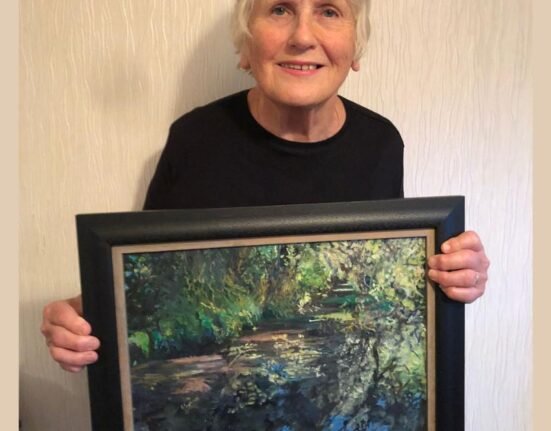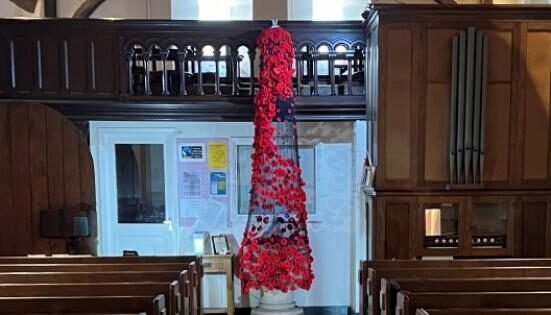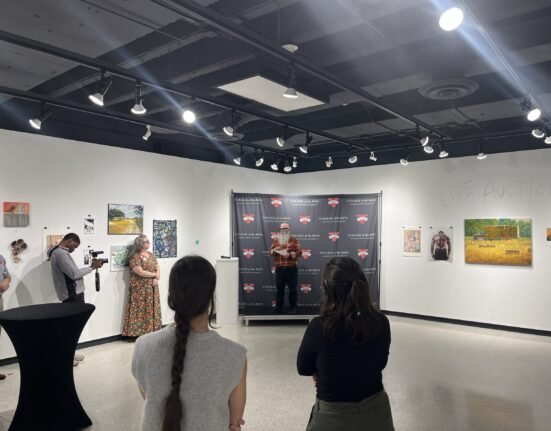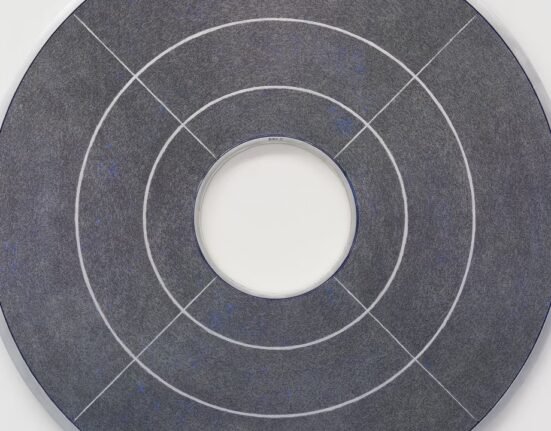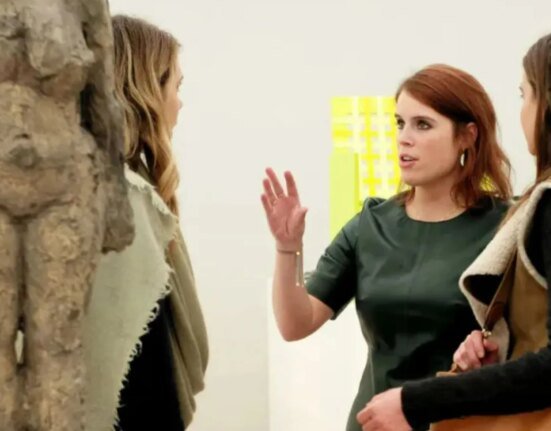Art
Sarah Moroz
Dana Schutz, Glory, 2024. © Dana Schutz. Courtesy the artist and David Zwirner
Leonor Fini, Sfinge la morte / La Belle, 1973. © The Artists. Courtesy of the artist and Galerie Marguo.
Another edition of Art Basel Paris (formerly Paris + par Art Basel) is coming around again. With two editions under its belt, this year’s fair is taking its place at the reupholstered behemoth, the Grand Palais. Among Art Basel Paris’s 195 galleries from 42 countries, there are 40 galleries new to the lineup since last year. Plus, a fresh sector, Premise, brings together a selection of unique curatorial projects. As the fair’s director Clément Delépine noted, Art Basel Paris is hoping to distill the city’s art offering in an established manner: “The fair is not a museum, but I believe it still has an institutional responsibility.”
While the homecoming to the historic Grand Palais will be a return to form, the scale of the fair can often feel overwhelming. It’s always a pleasure to wander off Avenue Winston-Churchill and see something more compact—such as smaller-scale fair alternatives, like OFFSCREEN, AKAA, Asia Now, and Paris Internationale. But there are also gallery shows across the city to be seen: Here are 10 Parisian exhibitions to check out this fall during Art Basel Paris.
Apolonia Sokol, Transsuport, 2024. Courtesy the artist and The Pill.
First established in Istanbul in 2015, The Pill is opening a sister location in Paris at 4 Place de Valois—not too shabby, considering its neighbors are the Louvre and the new location of Fondation Cartier. The 300-square-meter space will announce its presence on the scene with a solo exhibition by Parisian-born Polish Danish artist Apolonia Sokol. Her signature: evocative portrait paintings articulated in an explicitly frontal fashion and shaped by the intimacy she shares with the models she depicts: friends, lovers, and collaborators. The artist starred in a recent HBO-produced documentary Apolonia, Apolonia, which exhaustively follows the zigzags of Sokol’s life and career over a dozen years. As she states in the film, her art is “not a project; it’s a continuation.”
Dana Schutz, Mourning an Octopus, 2024 © Dana Schutz. Courtesy the artist and David Zwirner
Completists rejoice: New York–based painter and sculptor Dana Schutz’s second solo show with David Zwirner is happening on the heels of her major Parisian survey “Dana Schutz: Le monde visible (The Visible World)” at the Musée d’Art Moderne, which closed earlier this year.
These wet-on-wet paintings are inhabited by figures wrestling with drolly ludicrous scenarios. To wit: A cluster of cyclops-like creatures grasps frantically for loose eyeballs and fruit on the ground in The Optometrists (all works 2024), and a man is swallowed by a giant fish The Catch. Elsewhere, a figure is fabricated as if out of clay, with scattered sculpting tools on the floor nearby in The Medium; and a group processional carries a befuddled body in The Patient. Mythologically tinged and outlandish, the paintings capture the bizarre spirit of today’s absurdist world.
Hauser & Wirth
Oct. 14–Dec. 21
Rashid Johnson, Soul Painting “Baby Me”, 2024. © Rashid Johnson. Photo by Sarah Muehlbauer. Courtesy the artist and Hauser & Wirth
Rashid Johnson, God Painting “Angel”, 2024. © Rashid Johnson. Photo by Stephanie Powell. Courtesy the artist and Hauser & Wirth
If you want to whet your appetite in anticipation of his show next year at the Guggenheim, Rashid Johnson will have new works at Hauser & Wirth for viewers to relish around the theme of animism. There are paintings—closely related to previous bodies of work, entitled “Soul Paintings” and “God Paintings”—and shell-embedded bronze sculptures. Alongside, Johnson is showing a new film, Sanguine, exploring three generations of the artist’s family.
In the paintings on view, Johnson’s color spectrum volleys from reds to blues, creams to browns, while also employing materials with charged racial histories such as shea butter and black soap. Looming large over the show is Kevin Quashie’s 2012 book The Sovereignty of Quiet, which discusses how “concepts like surrender, dreaming, and waiting can remind us of the wealth of Black humanity.” The show is also filled with a recurring abstract form: the almond-shaped vesica piscis (two intersecting discs).
Marian Goodman Gallery
Oct. 12–Dec. 21
Daniel Boyd, Untitled (WWYMPCB), 2024. Photo by Studio Daniel Boyd. © Daniel Boyd. Courtesy of the artist and Marian Goodman Gallery
Pulling from traditions of his Aboriginal ancestors and Torres Strait Islander people, Australian artist Daniel Boyd addresses the legacy of colonialism. Specifically, he interrogates which narratives are championed within the canon of history in his dot-filled wall works. The title of the exhibition is a reference and retort to “dreamtime,” a harshly reductive anthropological term ascribed to the beliefs of Australian Aboriginal groups. It’s been a running theme in the artist’s practice: In the main exhibition of the 56th Venice Biennale in 2015, for example, four of his paintings, executed in oil, charcoal, and archival glue on polyester, referenced the traditional charts used by Indigenous Marshall Islands seafarers.
This exhibition at Marian Goodman Gallery, Boyd’s first solo outing in France, includes new paintings that reference Greek mythology and the Surrealist ideas of André Breton, and depict basketball player Magic Johnson, along with the artist’s own family figures. The intervention on the gallery’s verrière (glass roof) and front vitrines echoes his recent installation at the Gropius Bau in Berlin in 2023.
Max Ernst, “PARIS SURRÉALISTE: Max Ernst – Histoire Naturelle”
Jeanne Bucher Jaeger
Through Jan. 18, 2025
Max Ernst, Histoire Naturelle – La roue de la lumière, 1926. Photo by Jean-Louis Losi. Courtesy Jeanne Bucher Jaeger, Paris-Lisbon © Adagp, Paris 2024
Founded in 1925, Jeanne Bucher Jaeger is one of the few extant Paris galleries to have been around when Surrealism was unfurling in real time. During this era, the gallery supported such pillars of the movement as Man Ray, Hans Bellmer, and Yves Tanguy. Today, the gallery is exhibiting work by another Surrealist: Max Ernst. Visitors walk through contemporary artist Evi Keller’s exhibition (the two presentations are envisioned in parallel) to arrive at this back-room show, which is named after a book first published in 1926 encompassing 34 grattages and frottages of natural elements like leaves, birds, and bark.
The gallery calls this artistic method “the graphic equivalent of automatic writing”: They’re reproduced as phototypes, the main method of printing postcards until the 1930s. The endeavor was prompted by a listless rainy day in an inn by the sea, where Ernst started fixating on textures and reproducing them.
Galerie Mitterrand
Through Nov. 2
Austrian artist Peter Kogler has been working with digital creativity in an ongoing fashion from as early as 1984, when the first Macintosh computer came on the market. The artist has described this moment as a “paradigmatic shift” when it comes to creating images. Ants, brains, and globes are recurrent motifs that, to him, emphatically highlight our reliance on information systems and communication.
In Galerie Mitterrand’s first gallery space, accessible from Rue du Temple, the artist’s most recent works are on view, including two holographic projections and aluminum sculptures. The second space, nestled in the courtyard behind, features prior works by Kogler produced between 1990 and 2020, including silkscreen prints and canvases with metal sculptures.
Ana Karkar, Until he appeared again, 2024. © The Artists. Courtesy of the artist and Galerie Marguo.
If the blockbuster “Surrealism” exhibition at the Centre Pompidou (on view through January 13th) wasn’t satiating enough, more awaits at various galleries throughout the city, including Galerie Marguo. Across paintings and a handful of three-dimensional objects, “Deli Dali” presents 11 historical and contemporary artists. There are works by self-taught painter Gertrude Abercrombie, whose depictions of domestic spaces evoke chimerical atmospheres and an inquiétante étrangeté (disturbing strangeness).
Another notable name is Austrian painter and printmaker Ernst Fuchs, a founding member of the Vienna School of Fantastic Realism who created mysticism-infused paintings and drawings. In the selection of contemporary artists, Nicolette Mishkan, an Iranian American artist based in Los Angeles, showcases futuristic paintings that submerge magical mermaids into aqueous realms. Elsewhere, Zheng Zhilin, based in Guangzhou, China, colorfully explores the sinuous dynamism of body language.
Priska Pasquer
Oct. 12–Nov. 10
What could be more fitting than presenting works by Pablo Picasso so close to the Picasso Museum? But at Priska Pasquer, they’re not exhibited in a one-to-one fashion: His works are placed in dialogue with four contemporary artists of varying ages and nationalities. Enmeshing Eastern and Western artistic traditions, Japanese artist Leiko Ikemura depicts ethereal landscapes and figures in transformative interconnected moments. Ukrainian artist Aljoscha’s sculptures and installations are fabricated from synthetic materials, which showcase the way science can shape art.
Meanwhile, Bosnian artist Radenko Milak creates graphic watercolors whose subjects are sourced from photojournalism, film, and archival material, blurring the lines between documentation and artistry. Israeli painter Zohar Fraiman explores femininity and digital culture in a vivid palette with prismatic perspectives. While disparate, cumulatively these works offer “both aesthetic pleasure and intellectual challenge,” as the gallery put it.
Almine Rech Matignon
Oct. 14–Dec. 21
James Turrell, installation view of City of Light, 2019 at Almine Rech Shanghai2019. ©️ James Turrell. Photo by Alessandro Wang. Courtesy of the Artist and Almine Rech
A new light piece from James Turrell is always a thing of beauty. For over half a century, the American artist has engaged viewers by using his training in perceptual psychology. At Almine Rech’s Matignon space, he will show a new piece from his ongoing “Glassworks” series started in 2004, where he creates a unique shape through which light and colors develop gradually using LED technologies. The durational work is informed by a computer program creating continuous variations from light-emitting diodes. “Light is not ephemeral, it is a material, photons are matter,” Turrell stated in an interview with the gallery.
At the same time, Gagosian will also be presenting the largest show of Turrell in Europe in decades at its space just outside of Paris. That show will feature two new large installations and two projected works, as well as plans of Turrell’s long-awaited desert monument, Roden Crater.
AFIKARIS
Oct. 17–Nov. 23
Nigerian artist Boluwatife Oyediran debuted with a solo exhibition at AFIKARIS two years ago (“Point of Correction”), creating imagery overturning white patriarchal tropes. Now, “Inverted Blackness” features portraits of Black immigrants living in the United States, their skin articulated in shades of blue.
This color choice attests to the artist’s own experience of racial malaise as a Nigerian man studying in America (he graduated with an MFA from the Rhode Island School of Design earlier this year). This chromatic alternative at once references the photographic negative—in which the lightest areas of the photographed subject appear darkest—and the roiling negative bias Black people face in America. The canvas Higher Goals (After Hammons) (2024) is a self-portrait referencing Black American artist David Hammons’s Higher Goals (1986), a public sculpture work that featured colossally towering telephone poles mounted with basketball backboards.


